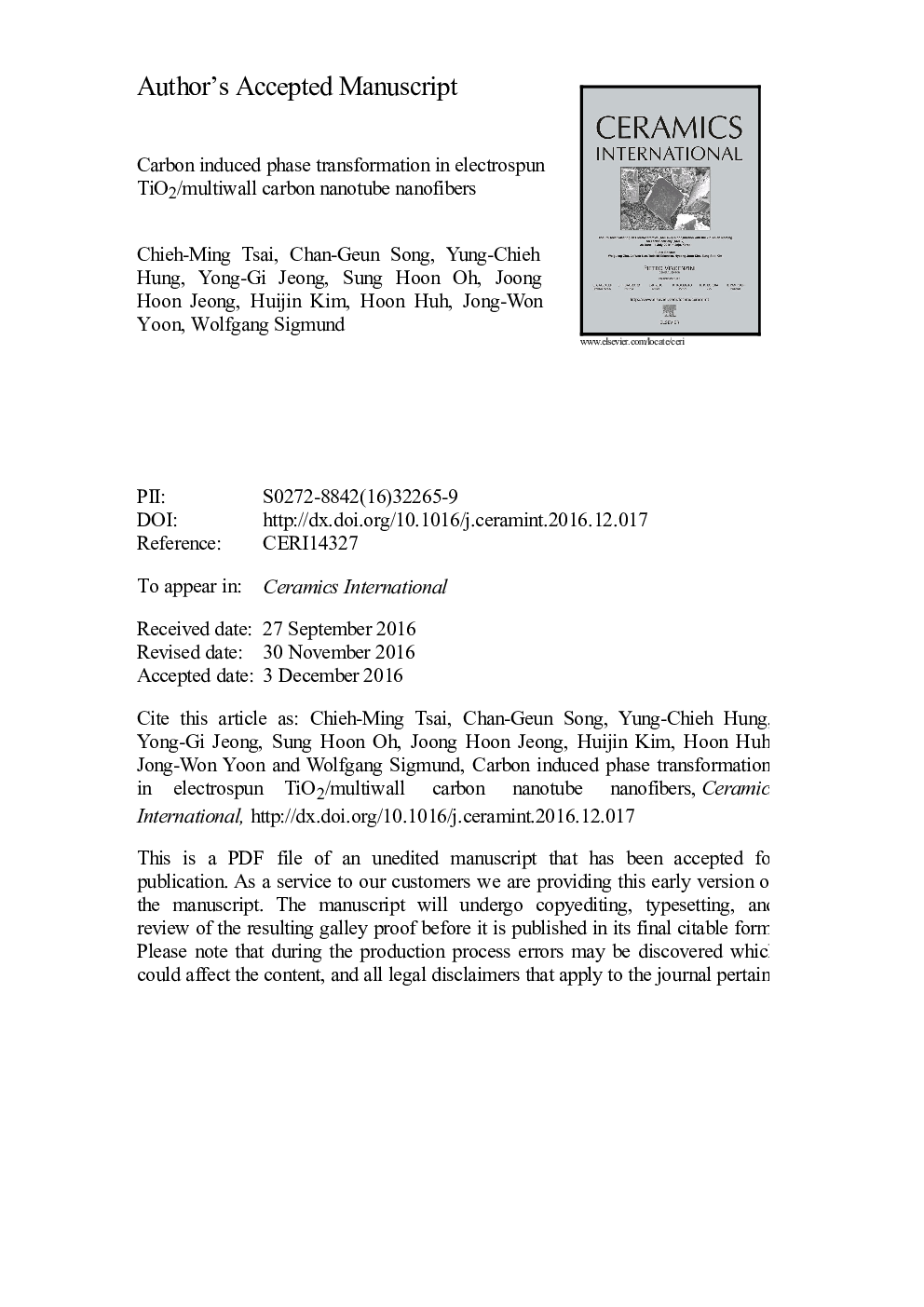| Article ID | Journal | Published Year | Pages | File Type |
|---|---|---|---|---|
| 5438930 | Ceramics International | 2017 | 22 Pages |
Abstract
Nanofibers of titania and composite nanofibers of titania and multiwall carbon nanotubes were synthesized by electrospinning using a sol-gel process combined with activated carbon nanotubes. The relationships of treatment temperature, carbon nanotube content on the crystal phase, fiber morphology, and electric properties are reported. It is found that the rutile phase becomes more prominent at low heat treatment temperatures with an increase of carbon content in nanofibers, be it for higher amount of carbon due to reducing atmosphere or due to an increase in MWCNT. Atmospheric control and lower heat treatment temperatures enable crystalline nanocomposite fibers of anatase where the level of rutile is below the detection limit of XRD or Raman spectroscopy. This work provides a new path to fabricate electrospun TiO2/MWCNT nanocomposite nanofibers with limited C-induced rutile phase.
Related Topics
Physical Sciences and Engineering
Materials Science
Ceramics and Composites
Authors
Chieh-Ming Tsai, Chan-Geun Song, Yung-Chieh Hung, Yong-Gi Jeong, Sung Hoon Oh, Joong Hoon Jeong, Huijin Kim, Hoon Huh, Jong-Won Yoon, Wolfgang Sigmund,
